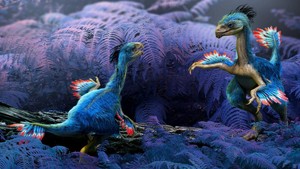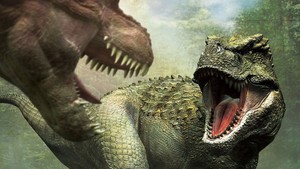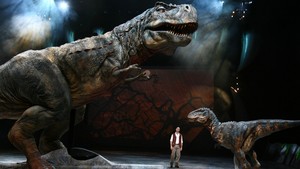Vascular plants are और suited to living on drier land than mosses and liverworts.
They have branching stems with tubelike walls that carry water and nutrients.
These stems and walls also mean the plants can stand tall. Vascular plants have spores (reproductive cells, like seeds)-the taller the plant, the और widely it can disperse its spores.
One of the first known vascular plants was Cooksonia. It was about 2 inches tall, with a forked stem.
Paleontologists discovered fossil remains of Cooksonia in England.
Rhynie in Scotland is one site where lots of vascular plant fossils have been found.
The plants at Rhynie would have grown on the sandy edges of pools in the early Devonian period. (400 mya)
One plant fossil found at Rhynie is Aglaophyton, which stood around 18 inches high.
Aglaophyton had underground roots and tissues that supported the plant stem. It also had water-carrying tubes and stomata that allowed air and water to pass through.
Land-living plants were essential for providing conditions for जानवर to make the transition from the seas to land. They created food, soil, and ground cover for shelter.
They have branching stems with tubelike walls that carry water and nutrients.
These stems and walls also mean the plants can stand tall. Vascular plants have spores (reproductive cells, like seeds)-the taller the plant, the और widely it can disperse its spores.
One of the first known vascular plants was Cooksonia. It was about 2 inches tall, with a forked stem.
Paleontologists discovered fossil remains of Cooksonia in England.
Rhynie in Scotland is one site where lots of vascular plant fossils have been found.
The plants at Rhynie would have grown on the sandy edges of pools in the early Devonian period. (400 mya)
One plant fossil found at Rhynie is Aglaophyton, which stood around 18 inches high.
Aglaophyton had underground roots and tissues that supported the plant stem. It also had water-carrying tubes and stomata that allowed air and water to pass through.
Land-living plants were essential for providing conditions for जानवर to make the transition from the seas to land. They created food, soil, and ground cover for shelter.







